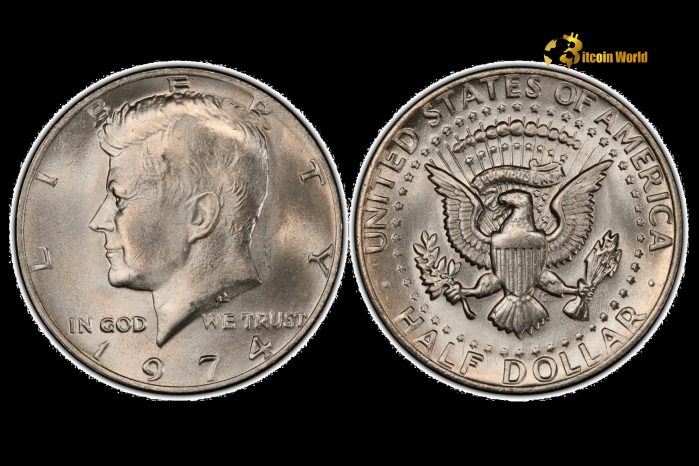Half Dollar Coin: Understanding Its Value and the 1776-1976 Bicentennial Edition
The half dollar coin has long been a significant part of American numismatic history. Among its many iterations, the 1776-1976 Bicentennial half dollar stands out for its historical and collectible appeal. Featuring unique designs commemorating the United States’ 200th anniversary, this coin remains a favorite among collectors and history enthusiasts alike.
In this guide, we’ll delve into the history, design, and value of half dollar coins, with a special focus on the 1776-1976 Bicentennial half dollar coin.
What Is a Half Dollar Coin?
The half dollar coin, valued at 50 cents, is a U.S. coin that has been in circulation since 1794. Over the years, it has undergone several design changes, making many of its editions highly collectible.
Specifications
- Composition: Depending on the era, half dollar coins have been made of silver, copper-nickel, or clad metal.
- Weight: Approximately 11.34 grams for modern coins.
- Diameter: 30.61 mm.
1776-1976 Bicentennial Half Dollar Coin: Key Details
The 1776-1976 Bicentennial half dollar, also known as the Kennedy half dollar, was issued to commemorate the 200th anniversary of American independence.
Design Features
- Obverse (Front): Features the iconic portrait of President John F. Kennedy, designed by Gilroy Roberts.
- Reverse (Back): Depicts Independence Hall in Philadelphia, the site where the Declaration of Independence and U.S. Constitution were debated and adopted. This design was created by Seth G. Huntington.
- Dual Dates: The coin is marked with “1776-1976” to signify the Bicentennial.
Mintage
- Produced between 1975 and 1976, the Bicentennial half dollar was struck in large quantities by the Philadelphia, Denver, and San Francisco mints.
| Mint | Mintage | Composition |
|---|---|---|
| Philadelphia (No Mint Mark) | Over 234 million | Copper-Nickel Clad |
| Denver (“D”) | Over 287 million | Copper-Nickel Clad |
| San Francisco (“S”) | 11 million (Proof) | 40% Silver (Proof & Uncirculated) |
Value of Half Dollar Coins
Modern Circulating Half Dollars
- Modern half dollars, primarily those minted after 1971, are made of copper-nickel and have limited numismatic value unless in uncirculated or proof condition.
1776-1976 Bicentennial Half Dollar Value
The value of the 1776-1976 half dollar depends on its condition, mint mark, and whether it contains silver:
- Circulated Coins: Typically worth their face value of $0.50.
- Uncirculated Coins: Can fetch $1–$3.
- Proof Coins (40% Silver): $6–$12 depending on condition and demand.
How to Determine the Value of a Half Dollar Coin
- Check the Mint Mark
- Located on the obverse side near Kennedy’s neck.
- Coins from San Francisco with “S” mint marks are more valuable.
- Inspect the Condition
- Coins in mint state (no wear) or proof condition command higher prices.
- Graded coins from organizations like PCGS or NGC are worth more.
- Identify the Composition
- Bicentennial coins minted at San Francisco in 40% silver are worth more than their copper-nickel counterparts.
- Market Trends
- The value of silver greatly influences the price of 40% silver half dollars.
Collecting 1776-1976 Bicentennial Half Dollars
Why Collect Them?
- Historical Significance: Commemorates a milestone in U.S. history.
- Unique Design: Independence Hall reverse makes it stand out.
- Affordable Entry Point: Easy to find and collect without a significant investment.
Tips for Collectors
- Look for uncirculated or proof coins in original packaging.
- Focus on 40% silver editions for long-term value appreciation.
- Store coins properly to prevent tarnishing or damage.
Other Notable Half Dollar Coins
| Coin | Years Minted | Highlights |
|---|---|---|
| Walking Liberty Half Dollar | 1916–1947 | Iconic design by Adolph A. Weinman. |
| Franklin Half Dollar | 1948–1963 | Features Benjamin Franklin and Liberty Bell. |
| Kennedy Half Dollar | 1964–Present | Honors President John F. Kennedy. |
Conclusion
The 1776-1976 Bicentennial half dollar is a fascinating piece of American history and a must-have for collectors. While many of these coins are readily available at face value, their historical significance and unique design make them a cherished item in numismatic circles.
Whether you’re a seasoned collector or just starting, understanding the value and history of half dollar coins can enhance your appreciation for these timeless treasures.
To learn more about the innovative startups shaping the future of the crypto industry, explore our article on latest news, where we delve into the most promising ventures and their potential to disrupt traditional industries.
Disclaimer: The information provided is not trading advice, Bitcoinworld.co.in holds no liability for any investments made based on the information provided on this page. We strongly recommend independent research and/or consultation with a qualified professional before making any investment decisions.



